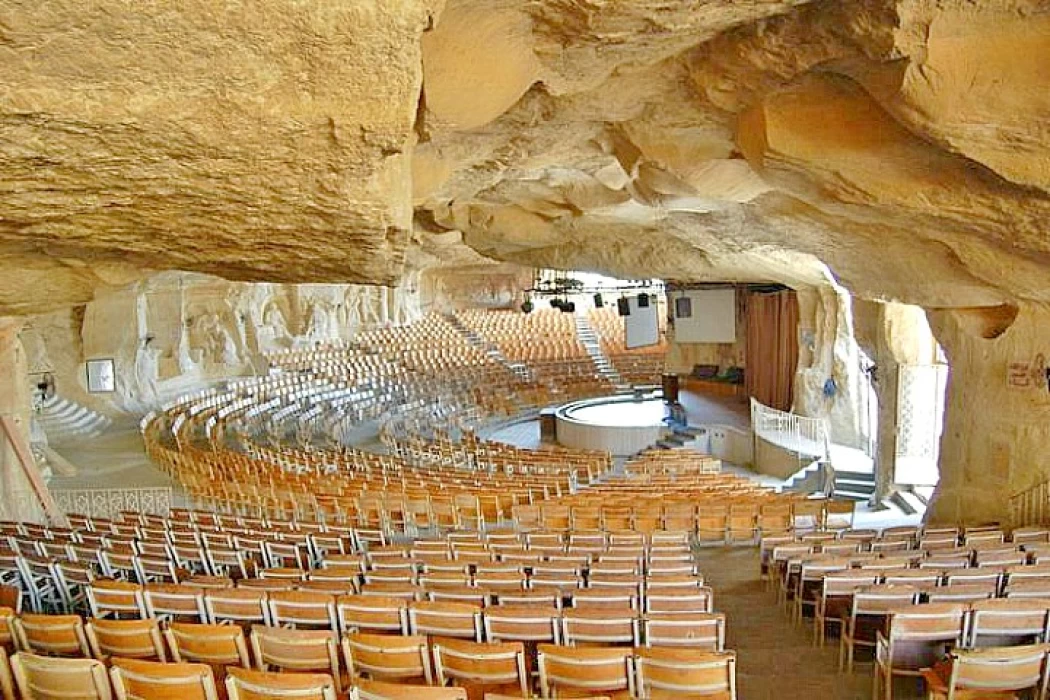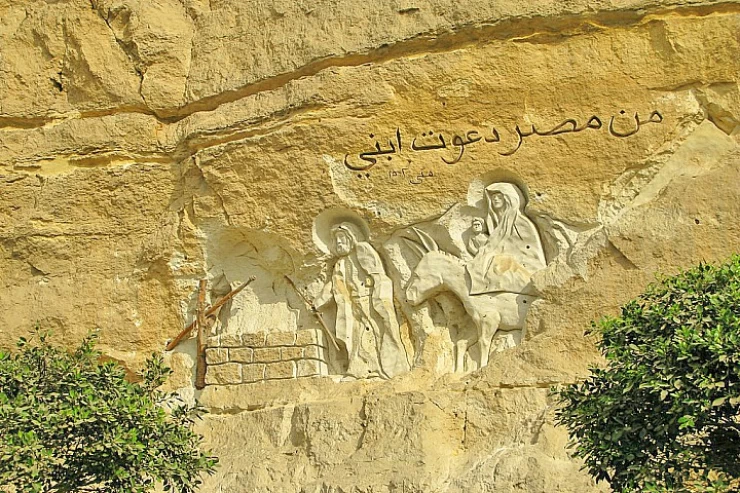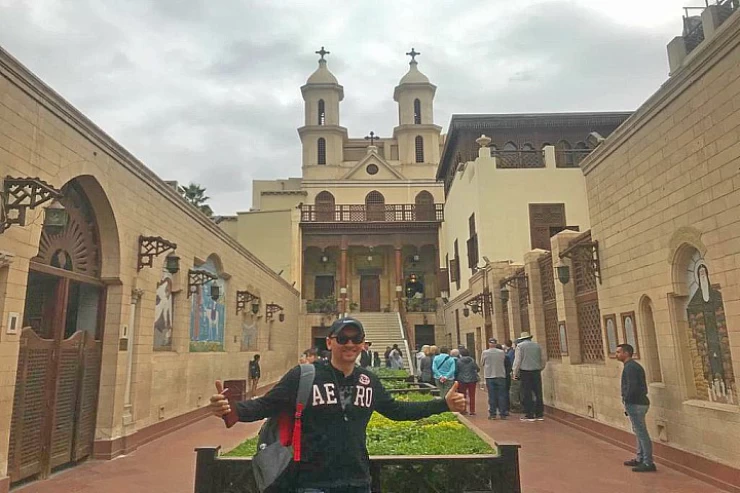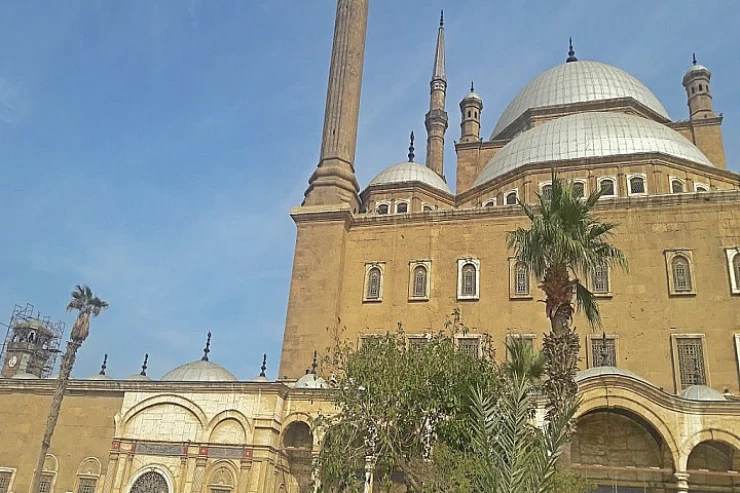
Monasterio de San Simón

San Simón el Tanner fue un artesano que vivió durante el siglo X y su monasterio no es visitado habitualmente durante el Tour de El Cairo , y la iglesia de la cueva que se dedicó a él parece que podría durar 10 más. El uso de una cueva preexistente y la pendiente que conducía al monasterio tiene capacidad para 20,000 personas alrededor de un púlpito central. Otras cuevas también se han construido en espacios de iglesias separadas, y todas ellas se han vinculado para crear un complejo cristiano masivo en el corazón de la ciudad de la basura. Cientos de miles de personas hacen la peregrinación cada año al monasterio. Cientos de miles de personas hacer la peregrinación cada año al monasterio.
La catedral principal lleva el nombre de la Virgen María y San Simón en conmemoración de la leyenda de la transferencia de la montaña Mokattam en noviembre de 979, cuando Simón el Tanner fue elegido para cumplir este milagro. La montaña Mokkattam está frente a la Ciudadela de Saladino.
Según los dichos coptos, el califa Al Muizz invitó a diferentes líderes religiosos a debatir en su presencia sin ira ni contención. En una de esas reuniones en las que estuvieron presentes el papa Abram y un judío llamado Jacob Ibn Killis, el papa tomó ventaja el debate. Conspirando para vengarse, Ibn Killis citó el versículo donde el Señor Jesús dijo en Mt 17:20: "Si tienes fe tan pequeña como una semilla de mostaza, puedes decirle a la montaña: Muévete de aquí para allá, y se moverá , Nada será imposible para ti.
Entonces, después de 3 días de oraciones y ayunos por la gente en toda la tierra de Egipto, Simon fue elegido para mover la montaña Mokattam. Se dice que un gran terremoto arrasó la montaña. Cada vez que la gente se levantaba para adorar, se levantaba la montaña y se veía el sol debajo de ella. Cuando la gente se sentó, la montaña se hundió. Esto se repitió tres veces.

La Virgen María y la Catedral de San Simón se construyeron en 2 etapas. Al principio, solo era una enorme cueva de piedra caliza en la colina. La segunda etapa fue en noviembre de 1994, que se celebra en la fiesta de San Simón. Se construyeron asientos fijos alrededor del altar en forma de un auditorio de cuarto de círculo para acomodar hasta cinco mil personas y es por eso que se convirtió en la iglesia más grande del Monasterio.
Otra capilla increíble en el Monasterio es la Iglesia de San Bola, llamada así por San Bola, el primer peregrino por las virtudes que poseía. Vivió en cuevas y soledad durante 70 años, durante los cuales nunca vio un rostro humano.
La cueva de la Capilla fue descubierta en 1986 durante los trabajos de construcción cuando una gran roca cayó mostrando una abertura en el techo de la cueva. Una historia intermitente sobre esta iglesia tuvo lugar en enero de 1992 cuando estaba en peligro por un incendio causado por una chispa eléctrica. La imagen de Jesucristo colgado en la iglesia y el altar no fueron destruidos de ninguna manera a pesar de que todo el interior de la cueva estaba dañado.
Luego tenemos la iglesia de San Marcos (que lleva el nombre de San Marcos, el primer predicador en Egipto) y San Simón, el Salón de los curtidores. Esta enorme cueva fue descubierta en 1979 llena de cientos de toneladas de rocas a una altura de 17 metros del suelo. Las paredes están decoradas con muchas imágenes maravillosas grabadas en las rocas que representan escenas de la Biblia .
Puedes descubrir muchas cosas interesantes sobre un edificio especial llamado Baron Empain Palace. Se encuentra en una gran ciudad llamada El Cairo, que está en un país llamado Egipto.
A Hidden Gem in Cairo's Mokattam Hills .One of the most remarkable and beautiful historical places of worship is the Monastery of Saint Simon the Tanner, also known as the Cave Church, situated in the hilly, rocky Mokattam Hills of Cairo. Unlike the busy and crowded capital city of Egypt, this beautiful monastery does not only serve as a tranquil sacred space open to those who come in to seek the presence of God but rather possesses an exceptional view of walls sculpted into rocks forming the structure of the church. The very history of the place is almost more than ancient Coptic Christianity and the miraculous. For this reason, no matter how much in a hurry one is, a visit to this place is worth it for every religious lover wanting to explore Egypt’s religious mosaic.
The monastery is named after Saint Simon the Tanner, a Coptic saint from the 10th century who is most celebrated for a miracle during the rule of the Fatimid Caliph Al-Muizz. As per the Coptic tradition, it is said that during one of the reigns of the Copts, Al Muiz introduced a challenge to Pope Abram, the most senior leader of the Coptic Orthodoxy, to shift the Mokkatam mountain to illustrate that Christianity is true. After three days spent in prayers and fasting, Pope Abram had a vision of the virgin Mary, who asked him to look for Simon the Tanner. Simon, a simple leather craftsman who was very well connected with God, when the church gathered to pray, the mountain in question was raised, thus demonstrating the Christian religion to Al Muiz.
As a remembrance of this miracle, many centuries later, the large monastery compound in Mokattam was built in recognition of Saint Simon and the important event. At present, the monastery is also a monument to the Christian history of Egypt and the Christian context of the country.
The Monastery of Saint Simon the Tanner, which is located in the city of Cairo, is paradoxically quite remote. This monastery is located within Mokattam’s garbage city, wherein the Zabbaleen, are informal garbage cleaners of the city. The monastery, however, remains an island of peace amidst the turmoil. While the path to the monastery weaves through several narrow, twisting cores and squat buildings teeming with the city’s recycling activity, the view of the Cave Church’s gigantic rock-hewn altar is simply astounding.
The Monastery of Saint Simon the Tanner encloses an ensemble of several churches, each of exceptional interest: The most well-known and the one that leaves the greatest impression is The Cave Church, or, as it is more often referred to, The Church of Saint Simon the Tanner. This colossal area is hewn from the mountainside, making it the biggest church in the entire Middle East that can hold about 20,000 people. The inside of the cave is filled with religious images, paintings, and sculptures from the Holy Bible and the life of Saint Simon, which is all aglow with bright light coming from the rock ceilings. Above the cave, there are numerous cracks through which come rays of sunlight.
Within the compound, there are other notable churches such as:
The Church of Saint Mark: A compact but equally attractive church boasting soft stone carvings and quiet, contemplative areas for prayer and meditation.
The Church of Saint Bola: This church is also hewn from the rock and is cherished by tourists for its calm and peaceful interiors.
The Church of the Virgin Mary and St. Simon the Tanner: A congregation of faithful at a smaller church, where the churchgoers convene for daily masses and spiritual services.
Every church embodies a different spirit and embraces the beauty of nature along with the depth of spiritual culture.
The architecture of the Monastery of Saint Simon the Tanner is one of its most breathtaking features. The churches and spaces are not built conventionally but are hewed out of the rock of the Mokattam Hills. The use of natural, unprocessed limestone as the wall surfaces creates a rugged environment for the interior, allowing the guests to truly appreciate the ancient history of this place. This style of building also plays a part in enhancing the quality acoustic properties of the monastery, enabling the beautiful resonation of the Coptic liturgical hymns and chants all around the huge cave.
The outside view of the church complex is also exceptional. The corrugated grounds at the periphery of the monastery are embellished with high-relief sculptures and carvings that illustrate Biblical and Coptic cultural incidents. These high-stand carvings were done by a Polish sculptor, invariably hierarchy, thereby elevating the station of the site.
The Zabbaleen Connection
Over the last century, the Zabbaleen, a well-organized group of waste collectors or garbage collectors inhabiting the Mokattam region of Cairo, have had a very positive interaction with the Monastery of Saint Simon the Tanner. Most of the Zabbaleen are Copts, and like most communities in Egypt, they have suffered from troubles both social and economic. Nevertheless, a considerable part of this population has thrived in Garbage City through better integration of waste management and environmental services.
Though the purpose of the monastery transcends the physical boundary of the monastery, containing the Zabbaleen as it is, the monastery also offers hope and faith to these people. Some of the Zabbaleen assist in maintaining the monastery, and the place is important in their routine activity as a prayer and a meeting place. In addition to the monastery of Saint Simon the Tanner, a visit to the Zabbaleen's settlement reveals the extent to which their relentless work in recycling waste in Cairo went.
Religious significance and pilgrimage
The Monastery of Saint Simon the Tanner is a well-known place of pilgrimage for Coptic Christians not only in Egypt but also throughout the world. Many pilgrims primarily come to pray and meditate on the life and miracles of St. Simon. They seek inner healing and divine connection. The church also conducts regular services such as mass and other religious activities besides of the memorial services for Saint Simon, who is remembered annually on the 26th day of November.


















